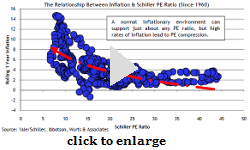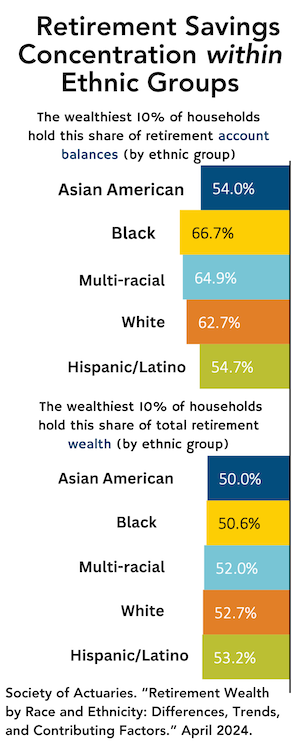
The prices of Treasury Inflation-Protected Securities (TIPS) zigged up and down in 2008, causing some people to wonder if this form of government-sponsored inflation insurance is predictable enough for retirement savers.
In late February of last year, for instance, investors bid TIPS prices up and drove yields below zero for the first time ever. In November, investors sold TIPS, and their yield jumped to 2.57%, implying an expectation of negative inflation.
Not to worry, Yale’s Robert Shiller and others argue in a recent paper. TIPS’ tipsiness last year was an anomaly, they said, as investors fled to TIPS because they feared inflation, and then, late in the year, abandoned everything but conventional Treasuries.
A lot of people are talking about TIPS these days. These specialized Treasury securities, whose principal is indexed to the inflation rate, have been touted since their introduction in 1997 as a way for fixed income investors to transfer inflation risk to their Uncle Sam.

And reasonable people now believe that inflation risk is growing. Although the recent commodity price bubble has eased, many now believe that the vast federal borrowing and spending in response to the financial crisis can’t help but bring significant inflation.
“We’ve had this massive fiscal stimulus, massive monetary stimulus, and it’s hard to see how that doesn’t translate into pretty substantial inflation, or at least pretty substantial risk of inflation,” David Swensen, Yale University’s investment chief, said in an television interview in May. Therefore TIPS, he said, “should be in every investor’s portfolio.”
Plan participants unaware
But there’s a problem: Most retirement savers don’t know much understand the basics of fixed income investing, let alone the finer points of buying TIPS. And far from every 401(k) plan offers a TIPS fund among its low-risk investment options.
While academics maintain that TIPS are the most sensible foundation of a retirement savings portfolio, 410(k) plan participants tend to put less money into TIPS-only about four percent of total assets-than into any other investment option, according to a 2007 survey by Vanguard.
“They’re the smallest holding because DC plans are largely developed ‘in the rear view mirror,’” said Stacy Schaus, defined contribution plan leader at PIMCO, whose Real Return fund invests in TIPS. “The typical plan will have about ten equity investment options and maybe two other options, such as a core bond fund and a stable value fund. Also, we’ve been in a bull market since the 401(k) era began, and we tend to buy what was attractive yesterday.” In other words, the average returns-chasing investor is bound to overlook TIPs even when they’re offered.
As for 401(k) plan sponsors, they don’t necessarily offer TIPS. But that may be changing. According to PIMCO’s 2009 Defined Contribution Consulting Support and Trends survey, 48% of U.S. investment consulting firms surveyed said that plan sponsors are adding or considering adding TIPS or inflation-adjusted annuities as investment options within their defined contribution plans.
 Not everyone believes that inflation risk is necessarily rising. The Congressional Budget Office projected low inflation between now and 2019 in its “Preliminary Analysis of the President’s Budget and an Update of the CBO’s Budget and Economic Outlook,” published last March. While the change in the Consumer Price Index in 2008 was about 4%, the CBO forecast a drop in the CPI of 0.7% in 2010 and an inflation rate of less than 2.0% every year for the next 10 years.
Not everyone believes that inflation risk is necessarily rising. The Congressional Budget Office projected low inflation between now and 2019 in its “Preliminary Analysis of the President’s Budget and an Update of the CBO’s Budget and Economic Outlook,” published last March. While the change in the Consumer Price Index in 2008 was about 4%, the CBO forecast a drop in the CPI of 0.7% in 2010 and an inflation rate of less than 2.0% every year for the next 10 years.
But Eric Petroff of Wurts Associates, an advisor to institutional investors with offices in Seattle and El Segundo, Calif., thinks inflation has become all but inevitable-and much too large a risk to ignore. “A number of people are saying that there’s going to be inflation, but the argument is over how quickly it will happen,” he told RIJ.
“Everyone’s talking different time periods,” he added. “I don’t think it will happen in the next six to 12 months but, undeniably, it has to happen. The Fed has printed all this money. Government spending will exceed half of all personal disposable income. And inflation after all is a tried and true way to replace debt.” Wurts’ June 2009 Quarterly Research Report contains a wealth of charts mapping recent economy activity.
Buy now or wait?
“Sometime in the next five to 10 years, the next asset class bubble will be TIPs,” Petroff told RIJ. “If inflation reaches four or five percent, a retire will say, ‘Forget it, I’ll take zero percent real return.’ If you’re a retiree, inflation is a risk that you want to deal with or at least worry about. I wouldn’t want to make a mistake on inflation and find myself at 70 working at Wal-Mart.”
Retirement savers might consider investing in TIPS sooner, before their prices fully reflect inflation expectations, said PIMCO’s Schaus. “You do hear a lot of people saying, ‘Yields are low, I’ll wait until inflation really kicks in.’ But I wouldn’t wait,” she said. “I’d put money in TIPS now, so they can start working for you as soon as inflation starts to rise. I think they might be cheap today, relative to what they could cost later if we have serious inflation.”
 Not that you need to try and time the TIPS market. “TIPS are safe if you match their maturity to your needs,” says Zvi Bodie, the Boston University pension expert who believes in funding a retirement income base entirely with TIPS. “If you do cash flow matching then what you’re counting on the price at some intermediate stage, but the amount you will receive for certain on the date that a coupon or principal is paid.”
Not that you need to try and time the TIPS market. “TIPS are safe if you match their maturity to your needs,” says Zvi Bodie, the Boston University pension expert who believes in funding a retirement income base entirely with TIPS. “If you do cash flow matching then what you’re counting on the price at some intermediate stage, but the amount you will receive for certain on the date that a coupon or principal is paid.”
But “volatility can be problem if you’re investing in TIPSs mutual fund,” Bodie added. “That’s because when you commingle tips of various maturities, you can’t do cash-flow matching. I have some money in a Vanguard TIPS fund through my 403(b), because that’s the only way they’re available in the plan. But in my Keogh plan, I’ve essentially matched maturities to what my needs will be.”
It’s interesting—though not necessarily instructive—to note that, from mid-2000 to June 2009, $10,000 in the Vanguard TIPS fund would have grown to over $18,000, while a $10,000 investment in an S&P 500 Index fund would have lost at least $200 over the past ten years.
© 2009 RIJ Publishing. All rights reserved.






